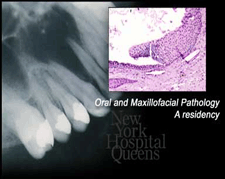المقالات
Fibroepithelial Polyp

Fibroepithelial polyps are small, round, knob-like growths that can form anywhere on the mucosa (the pink tissue lining the inside of the mouth), but are most common on the tongue and the lips. They are frequently caused by minor irritation or trauma, such as accidentally biting the area, and are made up of a thin layer of normal epithelium (the outer layer of mucosa or skin) surrounding a fibrous tissue core. Fibroepithelial polyps are most commonly single lesions, but occasionally occur as multiple lesions.
Fibroepithelial polyps are painless, but are subject to recurrent trauma, so infection is possible. They are usually pink in color, unless they have become irritated or infected; in this case, they may be red, white, or red and white. They are similar in appearance to fibromas and papillomas. However, both of these conditions typically grow steadily and can reach several centimeters in diameter; fibroepithelial polyps rarely continue to grow and usually remain as small, finger-like projections, seldom exceeding a few millimeters in diameter. They can only be diagnosed by examining their cells under a microscope after the lesion has been surgically removed.
We will remove the polyp surgically, and will also remove any source of irritation so the lesion does not occur again.
